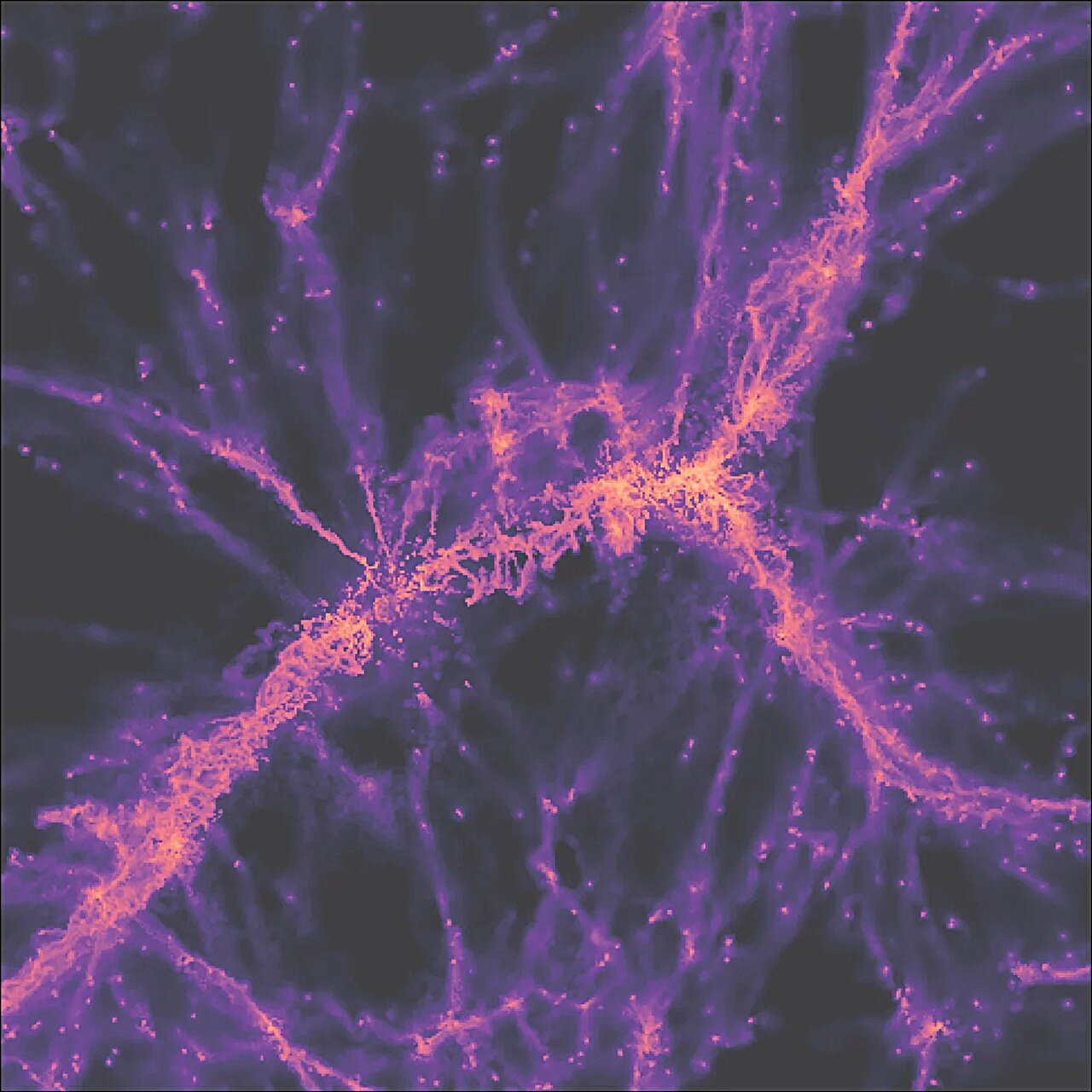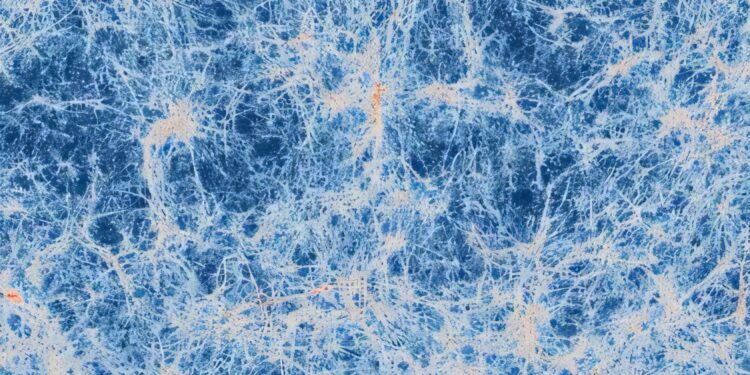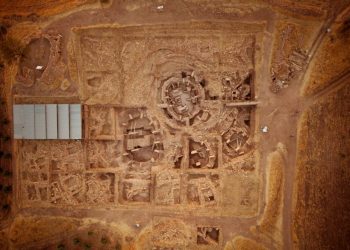A groundbreaking astronomical survey has captured the clearest image yet of a vast intergalactic filament—a key structure within the cosmic web, the vast network of matter that connects galaxies across the universe. This filament, stretching 3 million light-years, links two galaxies from an era when the universe was just 2 billion years old.
For decades, scientists have theorized that galaxies form along massive filamentary structures composed of gas and dark matter. These filaments serve as the backbone of the universe, funneling gas into galaxies and fueling their star formation. However, directly imaging these filaments has been one of astronomy’s greatest challenges.
Until now, most evidence of the cosmic web has come from indirect detections, such as how gas absorbs light from distant quasars. But the new observations, conducted by an international team of astronomers, provide a direct high-resolution look at one of these elusive structures.
Mapping a 3-Million-Light-Year Cosmic Thread
Researchers from the University of Milano-Bicocca and the Max Planck Institute for Astrophysics used the Multi-Unit Spectroscopic Explorer (MUSE), a powerful instrument on the Very Large Telescope in Chile, to capture this filament in unprecedented detail. The study required one of the longest MUSE observation campaigns ever undertaken—spanning hundreds of hours—to detect the faint glow of hydrogen gas within the filament.

“By capturing the faint light emitted by this filament, which traveled for just under 12 billion years to reach Earth, we were able to precisely characterize its shape, explains Davide Tornotti, a Ph.D. student at the University of Milano-Bicocca. “For the first time, we could trace the boundary between the gas residing in galaxies and the material contained within the cosmic web through direct measurements.”
The filament bridges two galaxies, each hosting a supermassive black hole, revealing how intergalactic gas connects galaxies and feeds their evolution.
This discovery is more than just an observational breakthrough—it helps refine theoretical models of how galaxies form and grow. The research team compared their findings to supercomputer simulations of the universe’s large-scale structure and found a remarkable match between theoretical predictions and real-world observations.
“The agreement between theory and observation is incredibly encouraging,” says Fabrizio Arrigoni Battaia, a scientist at the Max Planck Institute for Astrophysics. “We are thrilled by this direct, high-definition observation of a cosmic filament. But as people say in Bavaria: ‘Eine ist keine’—one doesn’t count. So we are gathering further data to uncover more such structures, with the ultimate goal of having a comprehensive vision of how gas is distributed and flows in the cosmic web.”
This research, published in Nature Astronomy, opens new doors for understanding how galaxies acquire the gas needed to form stars—a key process that shapes the universe as we know it.











